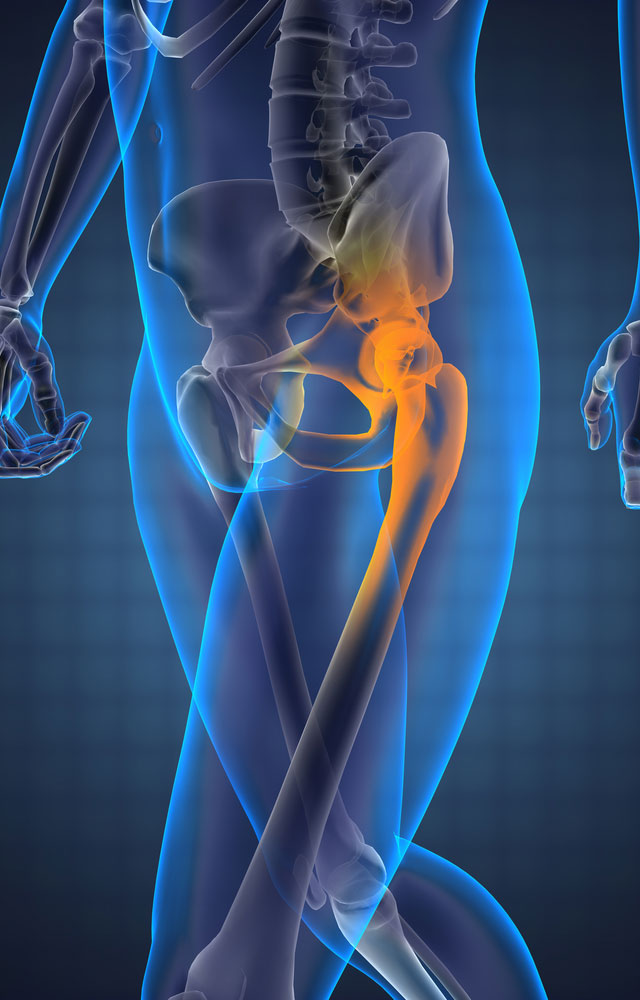
At Central Orthopedic, we regularly treat our patients’ ailments ranging from shoulder pain to golf injuries. Often, one of the more prevalent problems our patients face involve the hip. Obviously, our staff of surgeons and pain management specialists understand the difficulties of hip injuries. Without proper treatment, a hip injury can prevent you from engaging in your favorite physical activity.
Also, in chronic conditions, they can affect range of motion and prevent you from going about your day free from pain. Hip pain may also indicate that you need a joint replacement surgery. So, what causes hip pain?
5 Common Causes of Hip Pain
Often, we associate hip pain and hip injuries with older people. Basically, while this is true, younger people can also experience hip pain and dislocations. The hip is centrally located in the body. Therefore, pain that you experience in other parts of your body can be a sign of hip pain.
These body parts include the thigh, groin, buttocks, and the inside or outside of the hip joint. Some of the following ailments can benefit from physical therapy. Accordingly, pain in these regions may or may not be related to more general conditions:

1. Osteoarthritis
A common source of hip pain, osteoarthritis can cause the hip to become inflamed, breaking down cartilage tissue. Therefore, this will lessen the hip’s ability to resist friction. Patients with osteoarthritis in the hip may experience pain in any of the regions listed above.
2. Rheumatoid Arthritis
Rheumatoid arthritis is most common in women, and causes inflammation of the joints and surrounding tissues. It often affects both sides of the body in an almost uniform fashion. If left untreated, RA can cause permanent damage to the bones and joints.
3. Osteoporosis
Osteoporosis causes the bones to become more porous (and consequently weaker) due to calcium loss. This increases the chance that bones will fracture during a fall, and is especially common in patients over 65 years old.
4. Bursitis
Bursitis is the inflammation of the bursa, a sac filled with liquid. This can take place anywhere in the body after long periods of sitting or standing in fixed positions, or from the repetition of exaggerated motions. Bursitis in any regions close to the hip may cause hip pain.
5. Stress Fractures
Stress fractures result from repetitive motions like running and marching, and can occur as a result of either a weak bone (from osteoporosis) or a normal bone undergoing extreme pressure.
4 Approaches to Hip Replacement Surgery
Artificial joint replacement, or arthroplasty, can be very helpful to those who experience frequent hip pain. It won’t just relieve the pain, it will also replace the arthritic joint with an artificial joint.
Basically, this means that the bones will now rub against a new surface. This allows the joint to move smoothly and free from pain. This solution is most common for those with osteoarthritis. However, it can also be used for other conditions that cause worn-down joints.
1. Anterior Approach
This procedure achieves the same objective as artificial joint replacement. However, it takes a much less invasive approach. As of today, this is the most common joint replacement option.
2. Hip Resurfacing Arthroplasty
This approach allows the doctor to remove less bone during the procedure. It’s preferable for younger patients, since they’re more likely to need another joint replacement in the future.
3. Revision Arthroplasty
A procedure in which somebody who has already received one artificial joint receives a different artificial joint.
4. Hip Pinning Surgery
Often used for a fractured hip, this procedure reattaches the broken ends of the fracture. Because hip fractures occur most often in elderly people, resuming physical activity as soon as possible is paramount. This simple pinning solution will allow the patient to be active again, and minimize time spent in bed.
Conclusion
At Central Orthopedic, we want all of our patients to remain healthy during this time of COVID-19 and, of course, under normal circumstances. In order to ensure your wellness during this uncertain time, we continue to treat with Telemedicine.
